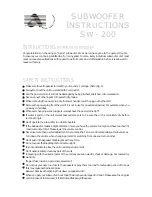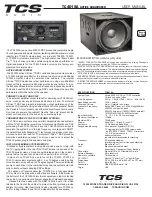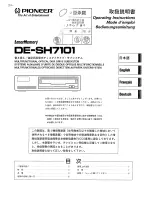
10
| KH 805
Positioning and orienting subwoofers and loudspeakers
Subwoofers are omni-directional in their typical pass band as the generated wavelength is
long compared to the surface producing the sound, therefore it does not matter in which direc-
tion the subwoofer is oriented when placed in the listening environment .
For your loudspeakers, however, an accurate positioning and orientation is vital .
X
Position your loudspeakers as follows:
System
Position and orientation
2 .0 (stereo)
±30°
5 .1
ITU-R BS .775-1:
0°, ±30°, ±110° (±10°)
(center, front left/right, surround left/right)
ANSI/SMPTE 202M:
0°, ±22 .5°, arrays to the surround left and to the surround right,
plus optional subwoofer(s)
6 .1
as 5 .1 systems plus 180° (back center)
7 .1
0°, ±30°, ±90°, ±150°
(center, front left/right, side left/right, back left/right)
For detailed information on the positioning and orientation of your loudspeakers, please refer
to the operating manuals of the loudspeakers .
If your subwoofers cannot be placed at the same distance from the listening position as the
loudspeakers, time-of-flight differences will occur .
X
Avoid distance differences of > 2 m (6'6") .
X
Compensate for time-of-flight differences as described in the chapter “Calibrating the phase”
on page 17 .
Connecting the subwoofer
Connecting the subwoofer to an audio source
X
Use balanced XLR cables to connect the corresponding sockets INPUT
C
of the KH 805 to
the audio source .
X
Use an XLR adapter (not supplied) to connect unbalanced cables (e .g . RCA cables) . Use the
following wiring if you want to make your own XLR adapter:
Wiring
Pin
Signal
Output (RCA)
Input (XLR-M)
1
Audio ground
2
Signal
+
3
Signal
-
The level delivered by devices with RCA outputs (
-
10 dBV) is usually less than the studio level
(
+
4 dBu):
X
If necessary, use active unbalanced-to-balanced converters in order to be able to connect
devices with unbalanced signals .
Connecting
unbalanced
cables












































